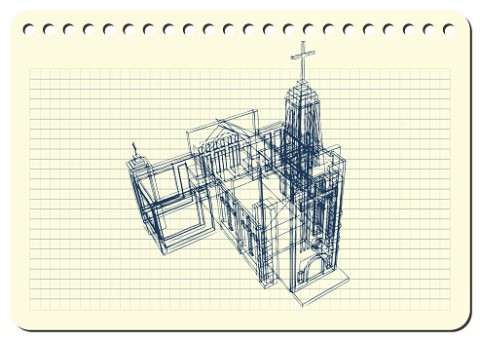When the chapel is the most open place on campus
Virginia Woolf’s ideal university had no chapel. Mine has more than one.

The main building of my school is closed for renovation. I’ve worked in offices inside of it for almost 20 years, worshiped in its chapel, taught in its classrooms, and sat in more faculty meetings than I’d care to count within its walls. I like its churchy feel—there are pews in the hallways and leaded glass windows—but it needs more light, more places to gather, smarter classrooms, and more worship spaces usable by more religious communities. When it finally emerges from its cocoon of scaffolding and boarded-up windows, it will have all of these things and a new name as well. Its rebirth will mark a new beginning for us, a new chance to create the school of our dreams.
The dream of the ideal school has been cherished by educators for centuries. One of my favorite such visions comes from the writer Virginia Woolf. In 1938, as fascism gained strength in Europe, Woolf—in her book Three Guineas—imagined a school that would be experimental at its core, focused not on specialization but on seeking new combinations of ideas and practices that would support human flourishing and creativity. It would be a school that would form people who hate war.
What would such a school need? Woolf believed it would need the perspective of those who have been excluded from the universities because of their gender, race, or religion—because only they would have the freedom to see beyond the status quo. It would need a faculty drawn not only from the good thinkers but also from the “good livers.” It would need art made by a new generation. It would need a curriculum focused not on the accumulation of wealth and power but on those arts, from mathematics and medicine to music and literature, that teach us to cherish what it is to be human and alive in the world.




